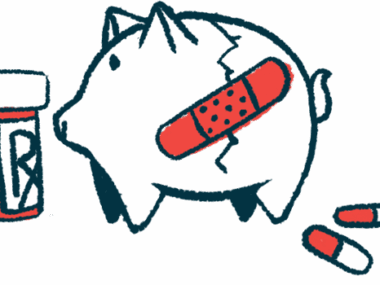IVIG Not Effective at Lowering Corticosteroid Dose in MG Patients
A 50% maintenance dose reduction was seen equally in IGIV-C, placebo groups
Written by |

Intravenous immunoglobulin therapy was not effective at reducing the daily dose of corticosteroids for treating myasthenia gravis (MG), a multicenter Phase 2 trial shows.
“These results suggest that immunomodulation alone was insufficient to facilitate dose reduction,” the researchers wrote.
The trial results were reported in the study, “A Randomized, Double-Blind, Placebo-Controlled Trial of the Corticosteroid-Sparing Effects of Immunoglobulin in Myasthenia Gravis,” published in Neurology.
MG is an autoimmune disease that affects the communication between nerve and muscle cells at the neuromuscular junction, where both come into contact. The disease is driven by self-reactive antibodies being produced that target proteins critical for nerve-muscle communication, most commonly acethylcoline receptors in muscle cells (85–90% of cases).
Although most patients respond well to standard acetylcholinesterase inhibitors, some don’t. In such cases, immunosuppressive treatments are the first choice, particularly corticosteroids. However, their long-term use can cause serious side effects and it should be restricted to the minimum effective dose for managing the disease.
In severe cases or when symptoms suddenly worsen (exacerbations), the treatment may include plasma exchange or intravenous immunoglobulin (IVIG), both of which can improve muscle strength with fewer side effects.
An international team of researchers reported data from a Phase 2 trial (NCT02473965) that evaluated whether Gamunex-C (IGIV-C), a form of IVIG marketed by Grifols Therapeutics, could be more effective than a placebo at reducing a corticosteroid maintenance dose by at least 50 percent.
The randomized, double-blind study was conducted in 24 centers in eight countries and enrolled 60 patients. Participants were a mean age of 48.1, with a mean time since diagnosis of 8.17 years. More than half (56.7 %) were female and nearly all (90%) were Caucasian. A total of 38 (63.3%) completed all study visits.
No difference between IGIV-C, placebo groups
Patients in the IGIV-C treatment group received a loading dose of 2 g/kg, followed by a maintenance dose of 1 g/kg every three weeks until week 36. Corticosteroid dose reduction started at week nine (after three doses of IGIV-C, or placebo), until week 36.
The percentage of patients who achieved at least a 50% reduction of the corticosteroid maintenance dose was not different between the IGIV-C and placebo groups (60% vs. 63.3%).
Patients receiving higher corticosteroid doses (above 20 mg/day) were more likely to achieve the 50% reduction goal than those who were on lower doses. This was true in both treatment groups.
If patients worsened while tapering off corticosteroids — defined as an increase of four or more points in the quantitative myasthenia gravis (QMG) score — corticosteroid doses were increased. QMG assesses muscular strength and a tendency to have fatigue using objective measures.
The time for the first symptom worsening episode was not different between the two groups: 33.1 weeks in IGIV-C versus 30.1 weeks in a placebo. The same was seen for the probability of worsening over time.
“Overall, no benefit was observed for IGIV-C treatment over placebo in facilitating the reduction of [corticosteroid] dose in MG patients in this 36-week treatment trial,” the researchers wrote.
IGIV-C treatment was generally well tolerated. A total of 90% of patients in the IGIV group and 93.3% in the placebo group had at least one treatment-emergent side effect. The most common IGIV group side effects were headache, MG worsening, upper respiratory tract infection, and nausea. The placebo group reported back and joint pain, and common cold symptoms.
Serious side effects occurred in four patients in the IGIV-C group (13.3%) and in six in the placebo group (20%). In the IGIV-C group, all serious events were related to MG exacerbations and the patients were off corticosteroids with stable disease before suddenly worsening. In the placebo group, three patients had serious events related to MG worsening; one was off corticosteroids and two were on a lower dose.
In some patients, side effects required withdrawing from the study. The most common cause was disease worsening, which affected seven patients in the IGIV-C group (23.3%) and four in the placebo group (13.3%).
There was one death in the IGIV-C group and two deaths in the placebo group, associated with MG exacerbation, sepsis, and cardiac arrest as a result of MG crisis, staphylococcal pneumonia, and acute respiratory failure.
This “study showed that IVIG was not superior to placebo in allowing [corticosteroids] dose reduction,” the researchers wrote, adding that “these results suggest that the effects of [corticosteroids] on MG are mechanistically different and cannot be compensated for by the immunomodulatory properties of IVIG.”







Leave a comment
Fill in the required fields to post. Your email address will not be published.